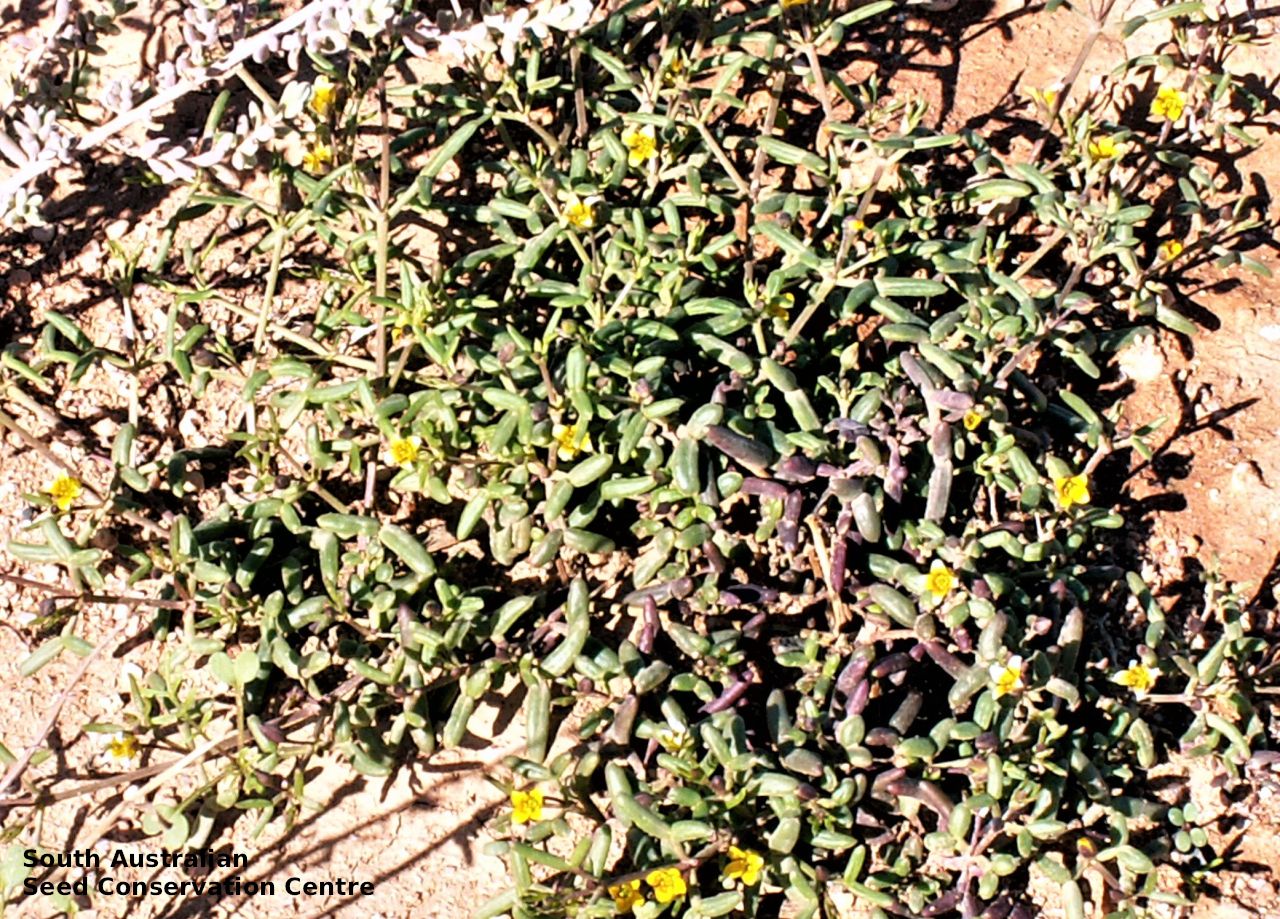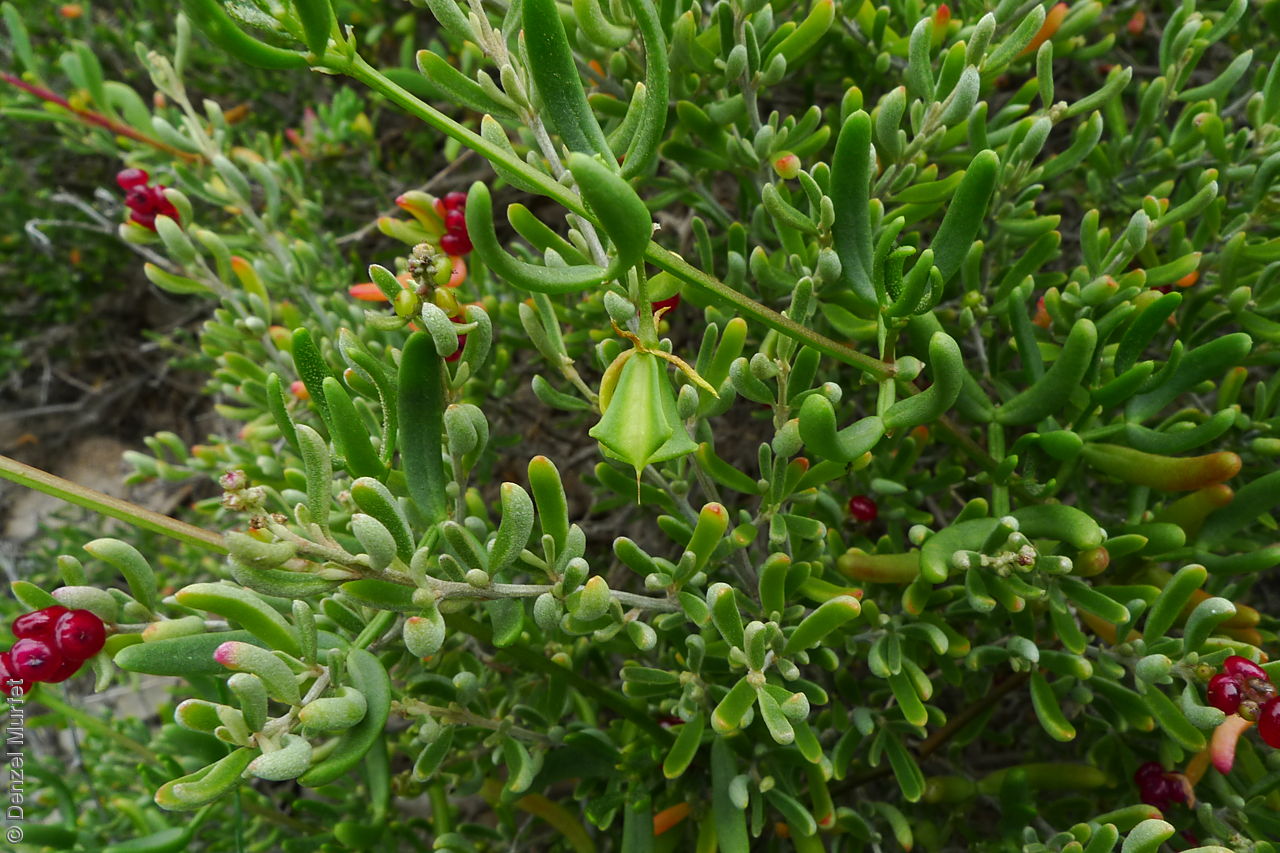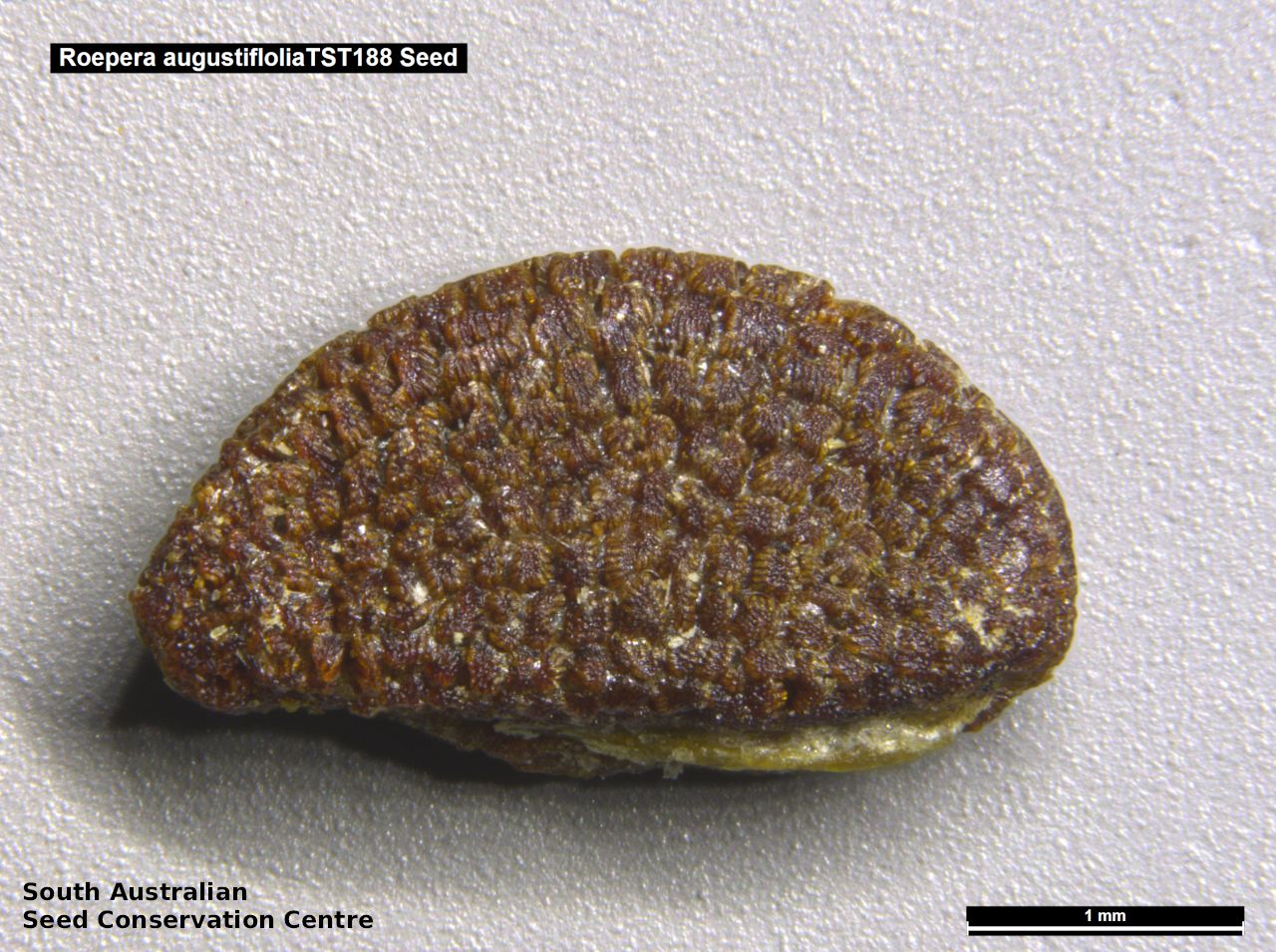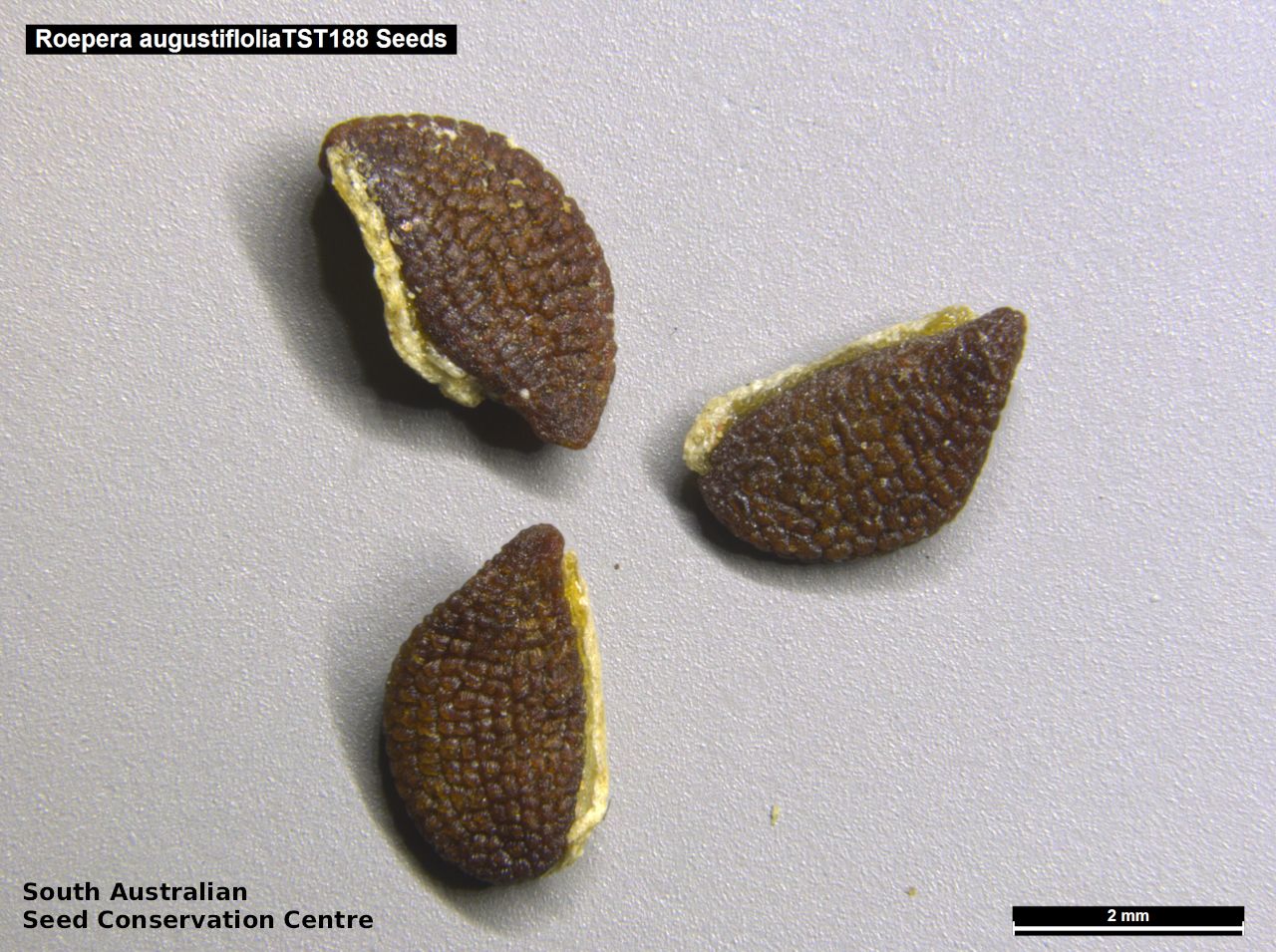






Botanical art
Prior names
Zygophyllum angustifolium
Zygophyllum billardierei var. bilobum
Zygophyllum ammophilum, partly
Zygophyllum billardierei, partly
Common names
Scrambling Twinleaf
Etymology
Roepera (formally Zygophyllum which is from the Greek 'zygon' meaning pair and 'phyllon' meaning leaf; referring to the pair of leaflets making up each leaf) is named after Johannes August Christian Roeper (1801 -1885), a German botanist and physician. Angustifolia from the Latin 'agustus' meaning narrow and 'folium' meaning leaf.
Distribution and status
Found in the central part of South Australia, growing in mallee scrub on calcareous soils. Also found in Western Australia, New South Wales and Victoria. Native. Common in South Australia. Rare in Victoria. Uncommon in Western Australia and New South Wales.
Herbarium regions: Nullarbor, Gairdner-Torrens, Flinders Ranges, Eastern, Eyre Peninsula, Northern Lofty, Murray, Yorke Peninsula
AVH map: SA distribution map (external link)
Plant description
Weak ascending perennial subshrub to 60 cm high with slender stems, sometimes scrambling over taller plants. Leaves fleshy and 'Y'-shaped to 40 mm long, green with leaflets linear to narrow oblong-elliptic to 25 mm long and 4 mm wide, fleshy. Flowers pale yellow with 4 sepals and 4 petals. Flowering between June and February. Fruits are pale brown 4-angled capsule to 9 mm long, drooping, truncate at apex with a short point, containing 1 or 2 seeds per cell. Seeds are dark brown wedge-shaped to 3.5 mm long and 2 mm wide, with a mesh-like surface. Seed embryo type is spatulate fully developed.
Seed collection and propagation
Collect seeds between September and April. Collect semi-dried and dried capsules by running your hands through the stems of the plant. Mature fruits will come off easily and will have a hard and dark seed inside each segment. Place the capsules in a tray and leave to dry for 1 to 2 weeks, depending on how green the fruit is. Then rub the dried capsules to dislodge the seeds. Use a sieve to remove the unwanted material. Store the seeds with a desiccant such as dried silica beads or dry rice, in an air tight container in a cool and dry place. Seed viability is usually high.
| Location | No. of seeds (weight grams) | Number of plants | Date collected | Collection number Collection location | Date stored | % Viability | Storage temperature |
|---|---|---|---|---|---|---|---|
| BGA MSB | 1,900 (6.34 g) 1,900 (6.34 g) | 50+ | 15-Oct-2007 | TST188 Eyre Peninsula | 19-Sep-2008 | 100% | -18°C |
Number of plants: This is the number of plants from which the seeds were collected.
Collection location: The Herbarium of South Australia's region name.
% Viability: Percentage of filled healthy seeds determined by a cut test or x-ray.